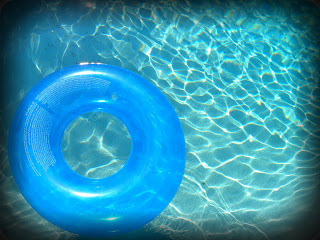As I listened to the Casey Anthony trial on the radio yesterday I was astounded to hear the defense attorney, Jose Baez, proclaim that 3-year-old Caylee Anthony had not been murdered by her mother. He claimed she slipped out the back door and accidentally drowned in the backyard swimming pool. I believe that is merely a desperate attempt to diffuse the evidence but it is going to get the media in a frenzy about the dangers of accidental drowning.
With Memorial Day approaching, lakes and beaches filling up, and pool covers coming off across the country I feel impelled to write about this timely subject.
You MUST teach your children to swim.
I usually try not to preach too much about what a parent must do to be considered a good parent, a competent parent. I shut my mouth when friends get into fearsome debates over parenting styles and what’s good and bad for not just their children but for everyone’s.
You MUST teach your children to swim.
Drowning is the number one cause of accidental death for children. Fifty-nine children drowned in Florida last year. Such a high number, yet it’s actually down from the 77 who drowned in 2007. In my greater metro area alone, 20 children drowned last year. They are dead and gone forever. Those deaths could have been prevented.
The child sneaked out an unlocked door and Grandma didn’t notice for a few minutes. A water wing fell off and the child couldn’t swim and went under. It was not necessarily a massive swimming pool–it could have been a bathtub, a ditch, a plastic backyard blow-up pool like yours. A mother turned her head for a moment to answer the phone, text or go to the restroom. The responsible adults were sitting beside the crowded pool, lake, or beach talking and took their eyes off the child for just a few seconds. Usually there is little to no splash, just a slide under the water and a quick gasp for breath as water floods their starving lungs.
It is a silent killer.
It only takes a few seconds to lose your child forever.
What You Can Do To Prevent Drowning:
- Learn to Swim. The American Association of Pediatrics urges parents of children age one and up to enroll their children in swimming lessons. However, this won’t “drown-proof” a child. Even when children have had formal swimming lessons, constant, careful supervision is necessary when children are in or near the water. According to the CDC, participation in formal swimming lessons can reduce the risk of drowning by 88% among children aged 1 to 4 years.
- Do Not Use Air-Filled or Foam Toys. Never use water wings, noodles, or inner-tubes in place of life jackets (personal flotation devices). These toys are not designed to keep swimmers safe. They can slip or fall off. A child can easily flip upside down and be unable to right himself.
- Always Supervise When in or Around the Water. Designate a responsible adult to watch young children while in the bath and all children swimming or playing in or around water. Supervisors of infants, children, and weak swimmers should provide “touch supervision” and always be within arms reach. Adults should not be involved in any other distracting activity (such as reading, talking/texting on the phone, or mowing the lawn) while supervising children.
- Install Barriers Around Water. Install a pool fence around an in ground swimming pool. Make sure waterfront property is fenced in and secured. Always ensure sliding glass doors, exterior doors and windows are locked. Consider pool alarms or a rigid pool cover as another line of defense. Do not leave toys in or next to a pool, filled tub, or body of water.
- Buddy System. Always swim with a buddy. Select swimming sites that have lifeguards whenever possible.
- Learn Cardiopulmonary Resuscitation (CPR). In the time it might take for paramedics to arrive, your CPR skills could make a difference in someone’s life.
It doesn’t matter if your kids eat high fructose corn syrup, artificial sweeteners, and drink from plastic water bottles. They’ll live if they watch too much tv or if they’re addicted to the Real Housewives or watch movies with inappropriate violence or language. Breast vs. bottle, cry it out vs. rock to sleep, vaccinate vs. delay–these over-debated and proselytized issues will not make a dramatic difference in our children’s life expectancies. But please, please, teach your children how to swim or they can die.
I’ve heard all the excuses as to why parents don’t enroll their kids in swim lessons:
- But they are afraid of the water. That won’t keep them away from it or prevent them from accidentally falling in it.
- They’ll cry/scream. They will get over it. And so will you.
- It costs too much money and/or we just don’t have the time. If you have the time and money to shuttle your kids to dance, gymnastics, soccer, and karate you can get them to swim lessons.
- But we don’t have a pool. Chances are there is at least one in your neighborhood or you live near a body of water or you take trips to the lake or the beach.
- We forgot this year but we’ll do it next summer. You may not have until next summer….
All parents know to teach their kids how to look both ways before crossing the street, not to talk to strangers, to stay away from the stove, not to play with matches. But far too many loving and otherwise competent parents neglect to teach their children one of the most basic survival skills.
Be vigilant. Be safe. I beg you, I implore you, please…you MUST teach your children how to swim. Give them a fighting chance.
To find swim lessons near you:
SwimLessons.com
American Red Cross
YMCA
USA Swimming
Infant Swimming Resource
























